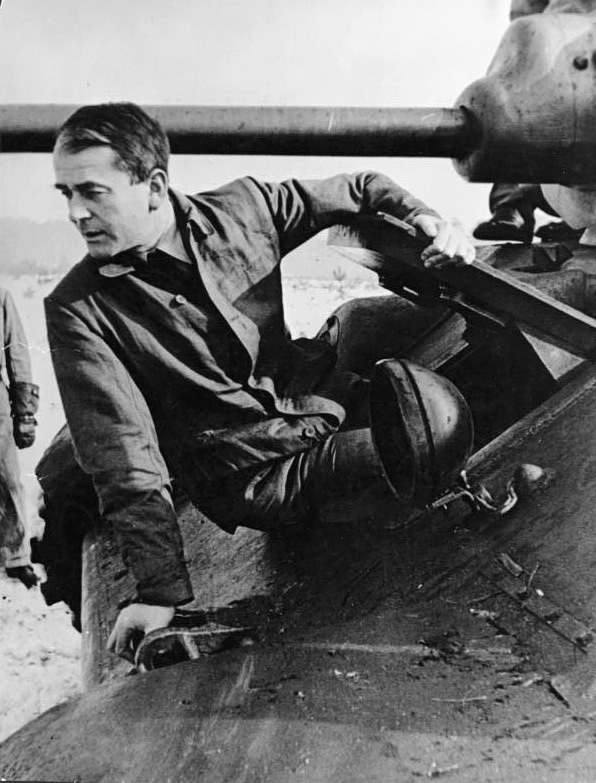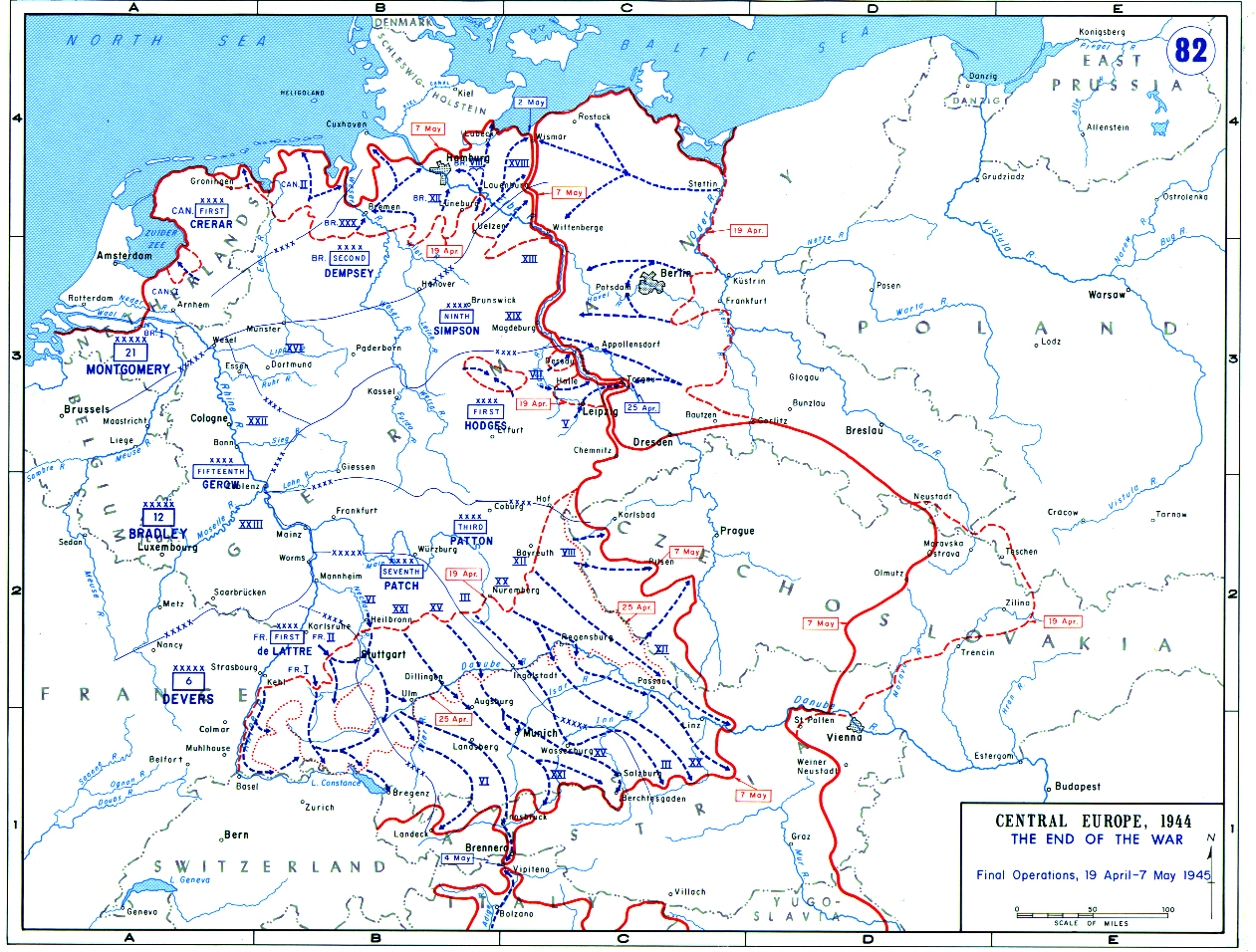|
24th Army (Wehrmacht)
The 24th Army (German: ''24. Armee'') was a World War II field army of the German Army. History The army was formed in October 1944 and was tasked with the defence of southern Germany. The army was commanded by General der Infanterie Hans Schmidt. Formed on the basis of the staff of the ''V. Armeekorps'', between February and April 1945, the army had no units assigned to it. Part of the Alpenfestung, its immediate task was to stop a possible Allied advance through neutral Switzerland. In April 1945, the 405th Division was transferred to it from the 19th Army to serve as the nucleus around which the 24th Army was to be built, but the army never had a paper strength of more than 9,000 men and capitulated to the American VI Corps commander Edward H. Brooks Lieutenant General Edward Hale Brooks (April 25, 1893 – October 10, 1978) was a senior officer of the United States Army, a veteran of both World War I and World War II, who commanded the U.S. Second Army during the Korean W ... [...More Info...] [...Related Items...] OR: [Wikipedia] [Google] [Baidu] |
Panzer V
The Panther tank, officially ''Panzerkampfwagen V Panther'' (abbreviated PzKpfw V) with ordnance inventory designation: ''Sd.Kfz.'' 171, is a German medium tank of World War II. It was used on the Eastern and Western Fronts from mid-1943 to the end of the war in May 1945. On 27 February 1944 it was redesignated to just ''PzKpfw Panther'', as Hitler ordered that the Roman numeral "V" be deleted. In contemporary English-language reports it is sometimes referred to as the "Mark V". The Panther was intended to counter the Soviet T-34 medium tank and to replace the Panzer III and Panzer IV. Nevertheless, it served alongside the Panzer IV and the heavier Tiger I until the end of the war. It had excellent firepower, protection and mobility, although its reliability was less impressive. The Panther was a compromise. While having essentially the same Maybach V12 petrol (690 hp) engine as the Tiger I, it had better gun penetration, was lighter and faster, and could traverse roug ... [...More Info...] [...Related Items...] OR: [Wikipedia] [Google] [Baidu] |
German Army (Wehrmacht)
The German Army (, "army") is the land component of the armed forces of Federal Republic of Germany, Germany. The present-day German Army was founded in 1955 as part of the newly formed West German ''Bundeswehr'' together with the German Navy, ''Marine'' (German Navy) and the German Air Force, ''Luftwaffe'' (German Air Force). , the German Army had a strength of 62,766 soldiers. History Overview A German army equipped, organized, and trained following a single doctrine and permanently unified under one command in 1871 during the unification of Germany under the leadership of Prussia. From 1871 to 1919, the title ''German Army (German Empire), Deutsches Heer'' (German Army) was the official name of the German land forces. Following the German defeat in World War I and the end of the German Empire, the main army was dissolved. From 1921 to 1935 the name of the German land forces was the ''Reichswehr, Reichsheer'' (Army of the Empire) and from 1935 to 1945 the name ''German Army (We ... [...More Info...] [...Related Items...] OR: [Wikipedia] [Google] [Baidu] |
Field Army
A field army (or numbered army or simply army) is a military formation in many armed forces, composed of two or more corps and may be subordinate to an army group. Likewise, air armies are equivalent formation within some air forces, and within a navy the comparable notion is that of a fleet. A field army is composed of 300,000 to 600,000 troops. History Specific field armies are usually named or numbered to distinguish them from "army" in the sense of an entire national land military force. In English, the typical orthographic style for writing out the names field armies is word numbers, such as "First Army"; whereas corps are usually distinguished by Roman numerals (e.g. I Corps) and subordinate formations with ordinal numbers (e.g. 1st Division). A field army may be given a geographical name in addition to or as an alternative to a numerical name, such as the British Army of the Rhine, Army of the Potomac, Army of the Niemen or Aegean Army (also known as the Fourth Army ... [...More Info...] [...Related Items...] OR: [Wikipedia] [Google] [Baidu] |
World War II
World War II or the Second World War, often abbreviated as WWII or WW2, was a world war that lasted from 1939 to 1945. It involved the vast majority of the world's countries—including all of the great powers—forming two opposing military alliances: the Allies and the Axis powers. World War II was a total war that directly involved more than 100 million personnel from more than 30 countries. The major participants in the war threw their entire economic, industrial, and scientific capabilities behind the war effort, blurring the distinction between civilian and military resources. Aircraft played a major role in the conflict, enabling the strategic bombing of population centres and deploying the only two nuclear weapons ever used in war. World War II was by far the deadliest conflict in human history; it resulted in 70 to 85 million fatalities, mostly among civilians. Tens of millions died due to genocides (including the Holocaust), starvation, ma ... [...More Info...] [...Related Items...] OR: [Wikipedia] [Google] [Baidu] |
Field Army
A field army (or numbered army or simply army) is a military formation in many armed forces, composed of two or more corps and may be subordinate to an army group. Likewise, air armies are equivalent formation within some air forces, and within a navy the comparable notion is that of a fleet. A field army is composed of 300,000 to 600,000 troops. History Specific field armies are usually named or numbered to distinguish them from "army" in the sense of an entire national land military force. In English, the typical orthographic style for writing out the names field armies is word numbers, such as "First Army"; whereas corps are usually distinguished by Roman numerals (e.g. I Corps) and subordinate formations with ordinal numbers (e.g. 1st Division). A field army may be given a geographical name in addition to or as an alternative to a numerical name, such as the British Army of the Rhine, Army of the Potomac, Army of the Niemen or Aegean Army (also known as the Fourth Army ... [...More Info...] [...Related Items...] OR: [Wikipedia] [Google] [Baidu] |
General Of The Infantry (Germany)
General of the Infantry (german: General der Infanterie, abbr. ) is a former rank of the German army (). It is currently an appointment or position given to an OF-8 rank officer, who is responsible for particular affairs of training and equipment of the ''Bundeswehr'' infantry. Former rank in the German ground forces General of the Infantry was a former rank of General of the branch OF-8 in the German land forces ( Imperial Army, ''Reichswehr'' and ''Wehrmacht'') and also in the Prussian Army and the Austro-Hungarian Army. It was the third-highest general officer rank, subordinate only to Colonel General and Field Marshal. It is equivalent to a three-star rank today. The same rank was adopted by the Finnish Army ( fi, Jalkaväenkenraali) between the world wars. German cavalry officers of equivalent rank were called ''General der Kavallerie'' and those in the artillery corps were ''General der Artillerie''. In 1935 the Wehrmacht added the ranks of ''General der Panzert ... [...More Info...] [...Related Items...] OR: [Wikipedia] [Google] [Baidu] |
Alpenfestung
The Alpine Fortress (german: Alpenfestung) or Alpine Redoubt was the World War II national redoubt planned by Heinrich Himmler in November and December 1943"Himmler started laying the plans for underground warfare in the last two months of 1943.... The plans are threefold, embracing (1) Open warfare directed from Hitler's mountain headquarters; (2) Sabotage and guerrilla activity conducted by partisan bands organized by districts, and (3) Propaganda warfare to be carried on by some 200,000 Nazi followers in Europe and elsewhere. Strongholds Established Already picked S.S. (elite) troops have been established in underground strongholds and hospitals in the Austrian, Bavarian and Italian Alpine area and it is the plan of Nazi leaders to flee to that region when the German military collapse comes" . for Germany's government and armed forces to retreat to an area from "southern Bavaria across western Austria to northern Italy"."But what of the top Nazis who cannot hide? With a com ... [...More Info...] [...Related Items...] OR: [Wikipedia] [Google] [Baidu] |
Switzerland
). Swiss law does not designate a ''capital'' as such, but the federal parliament and government are installed in Bern, while other federal institutions, such as the federal courts, are in other cities (Bellinzona, Lausanne, Luzern, Neuchâtel, St. Gallen a.o.). , coordinates = , largest_city = Zürich , official_languages = , englishmotto = "One for all, all for one" , religion_year = 2020 , religion_ref = , religion = , demonym = , german: Schweizer/Schweizerin, french: Suisse/Suissesse, it, svizzero/svizzera or , rm, Svizzer/Svizra , government_type = Federalism, Federal assembly-independent Directorial system, directorial republic with elements of a direct democracy , leader_title1 = Federal Council (Switzerland), Federal Council , leader_name1 = , leader_title2 = , leader_name2 = Walter Thurnherr , legislature = Fe ... [...More Info...] [...Related Items...] OR: [Wikipedia] [Google] [Baidu] |
19th Army (Wehrmacht)
The 19th Army (German: ''19. Armee'') was a World War II field army of the German Army. History Formed in August 1943 in occupied southern France from ''Armeegruppe Felber'' (the '' LXXXIII. Armeekorps''), the 19th Army defended southern France, the Vosges Mountains, Alsace, Baden and southern Württemberg during the Allied invasion of southern France and other large Allied military operations that had as their goal the liberation of southern France and the invasion of southern Germany. Although nominally a field army, the 19th Army was under strength and consisted of third tier soldiers, wounded veterans, conscripts and Hiwis. Southern France in general was treated as a third tier theatre and given minimal attention by the OKW. The entire army was outfitted with damaged and obsolete equipment, with four of the 19th army's divisions designated "static divisions," meaning that they were stripped of all mobile assets and forbidden to move from their assigned positions. The Hi ... [...More Info...] [...Related Items...] OR: [Wikipedia] [Google] [Baidu] |
Edward H
Edward is an English given name. It is derived from the Anglo-Saxon name ''Ēadweard'', composed of the elements '' ēad'' "wealth, fortune; prosperous" and '' weard'' "guardian, protector”. History The name Edward was very popular in Anglo-Saxon England, but the rule of the Norman and Plantagenet dynasties had effectively ended its use amongst the upper classes. The popularity of the name was revived when Henry III named his firstborn son, the future Edward I, as part of his efforts to promote a cult around Edward the Confessor, for whom Henry had a deep admiration. Variant forms The name has been adopted in the Iberian peninsula since the 15th century, due to Edward, King of Portugal, whose mother was English. The Spanish/Portuguese forms of the name are Eduardo and Duarte. Other variant forms include French Édouard, Italian Edoardo and Odoardo, German, Dutch, Czech and Romanian Eduard and Scandinavian Edvard. Short forms include Ed, Eddy, Eddie, Ted, Teddy and Ned. Pe ... [...More Info...] [...Related Items...] OR: [Wikipedia] [Google] [Baidu] |



